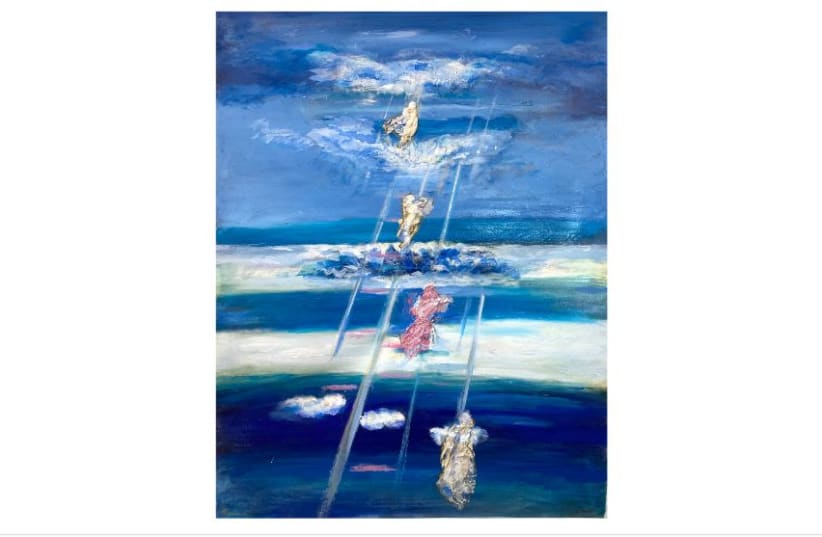“And he dreamed, and behold! A ladder set up on the ground and its top reached to heaven; and behold, angels of God were ascending and descending upon it... And behold, the Lord was standing over him, and He said, “I am the Lord, the God of Abraham your father, and the God of Isaac; the land upon which you are lying to you I will give it and to your seed... and through you shall be blessed all the families of the Earth and through your seed” (Gen. 27:12-14).
Over the centuries, the ladder seen by Jacob in his dream has inspired many symbolic interpretations.
R. Hayyim of Volozhin notes that the Torah does not say that the ladder was set on or in the ground (ba’aretz), but rather that it was set toward the ground (artzah). This signifies that the ladder’s principal anchoring is in the heavens above, and from there it descends until it reaches the Earth. The Sfat Emet says that every day the world is recreated anew and a ladder is sent down from heaven. Thus, Jacob’s dream of the “ladder standing on Earth with its top reaching heaven” is a symbol of the connection between our mundane world and higher states of consciousness.
There is a new ladder sent down from heaven every day, and God sits above the ladder. The Zohar says that Jacob’s ladder is a metaphor for the experience of prayer. Our job is to climb the ladder of prayer rung by rung until we reach the “awesome place” where “the Lord was standing over him.”
Similarly, Rabbi Jonathan Sacks says that prayer “is a ladder stretching from Earth to heaven. On this ladder of words, thoughts, and emotions, we gradually leave Earth’s gravitational field. We move from the world around us, perceived by the senses, to an awareness of that which lies beyond the world – the Earth’s Creator.”
Our sages speak of the ladder of prayer as having four rungs, four levels, ascending upward through the worlds of action and speech, to the level above thought. This process has been called hitpashtut hagashmiut (the doffing of physicality), where we let go of all our thoughts and feelings and rise upward by focusing our consciousness on the words of our prayer. Maimonides says that our intention in prayer is to have a heart empty of all thoughts and to imagine we are standing in heaven before the Divine Presence.
The angels on the ladder are said to be first ascending and then descending.
Perhaps this is a mirror of our desire to elevate the entire world from below to above, and to draw down light and blessing to the world and especially to the soldiers and the hostages. Rabbi Sacks says that “if the first stage is the climb, and the second standing in heaven, then the third is bringing a fragment of heaven down to Earth.”
The symbolism of Jacob's ladder, portrayed in art
Yoram Raanan’s Of Ladders and Angels is painted over a painting that was part of a series of cloud experimentations and meditations. Now he has added suggestions of ladders that seem to be descending from heaven, in lines of energy crossed by horizontal rays that form the rungs. Four ladders can be discerned, of different sizes, that seem to be moving in different frames of time and space.
Between the rungs of the ladders, there is a feeling of spaciousness. This reflects a teaching of Rabbi Shlomo Carlebach, who said that when you climb a ladder, as you lift your feet from level to level, your foot is in midair, in a space of nothingness.
Clouds, space, ladders, and angels – everything is more suggested than depicted in this painting, which has a soft, dream-like quality, simple and calm, yet at the same time full of atmosphere and vibration, energy, movement, and transcendence. The painting has a somewhat Rothko sensibility in its simplicity – and blocks and bands of color.
The color blue predominates, in various shades, with stripes of white and pink which were added to the acrylic pigment with oil crayons. The angels came into being as Raanan was wiping off excess paint with tissues, which adhered to the canvas, looking like winged beings. He outlined these shapes with gold markers to give them more shape and shimmer; they became more defined as he put soft gel on the tissue, which hardened into papier-maché and created a bas-relief feeling. He then added iridescent pearl, pink, and gold to make the shapes more vibrant.
History, as well as spirituality, is present in the painting. There are four angels, corresponding to an interpretation of the verses in which the angels represent the different empires – Babylon, Medes, Greece, and finally Rome. The first three angels ascended and then descended; the last ascended but did not descend, signifying that the exile of Edom would be a long one (Pirkei de-Rabbi Eliezer). According to Raanan, the pink hints at the empire of Edom (Rome), which is associated with the color red which stands for harsh judgment.
Nevertheless, in Jacob’s dream God promises to give the land to us, Jacob’s descendants. And so perhaps the ladder represents us, the future generations of Jacob’s children – the Jewish people. There are times when we reach great heights, and then there are times when we descend to the depths.
But we have seen that since that dark day on October 7, we are arising again to receive the blessings of Jacob’s dream.■
Meira Raanan is the author of Art of Revelation: A Visual Encounter with the Jewish Bible, a commentary on the paintings by her husband, Yoram Raanan. She also teaches Jewish meditation.
Esther Cameron is a poet, scholar, and essayist living in Jerusalem. She is editor-in-chief of The Deronda Review.

